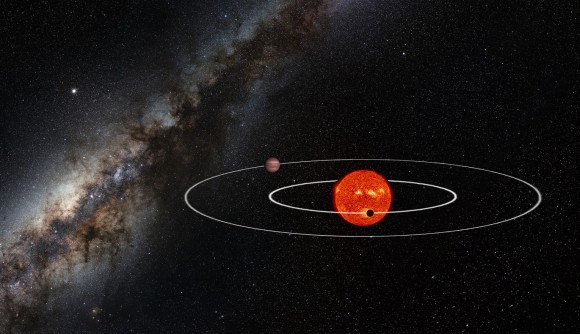

| Visitors Now: | |
| Total Visits: | |
| Total Stories: |

| Story Views | |
| Now: | |
| Last Hour: | |
| Last 24 Hours: | |
| Total: | |
How Scientists Confirmed The Mass Of An Invisible Exoplanet
Planets are so very tiny next to stars outside of the solar system, making it really hard to spot exoplanets unless they transit across the face of their star (or if they are very, very big). Often, astronomers can only infer the existence of planets by their effect on the host star or other stars.
That’s especially true of the curious case of Kepler-88 c, which researchers using the Kepler space telescope said was a possible planet due to its effects on the orbit of Kepler-88 b, a planet that goes across the host of its host star. European astronomers just confirmed the Kepler data using the SOPHIE spectrograph at France’s Haute-Provence Observatory.
It’s the first time scientists have successfully used a technique to independently verify a planet’s mass based on what was found from the transit timing variation, or how a planet’s orbit varies from what is expected as it goes across the face of its sun. That means TTV can likely be used as a strong method on its own, advocates say.
(…)
Read the rest of How Scientists Confirmed The Mass Of An Invisible Exoplanet (181 words)
© Elizabeth Howell for Universe Today, 2013. |
Permalink |
No comment |
Post tags: aix-marseille university, kepler-88, kepler-88 b, kepler-88 c, transit timing variation, university of porto
Feed enhanced by Better Feed from Ozh
Source: http://www.universetoday.com/107277/how-scientists-confirmed-the-mass-of-an-invisible-exoplanet/



